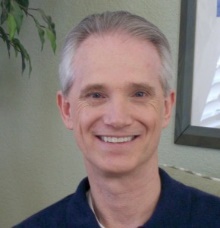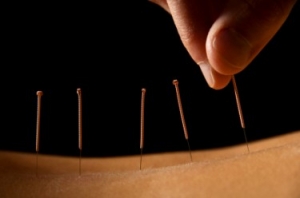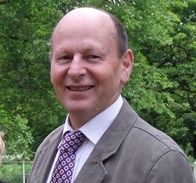Acupuncture group challenges back pain guideline as “evidence-biased medicine”
December 15, 2016
by John Weeks, Publisher/Editor of The Integrator Blog News and Reports
 The last month brought a remarkable concurrence of events in the political science of acupuncture and Oriental medicine. As previously reported here on Integrative Practitioner, influential former JAMA editor, George Lundberg, MD, shared an intense personal tale that twice made him a believer in acupuncture for his body-bending sciatica. Three weeks later, on November 30, 2016, a British government panel published a document removing acupuncture from its back pain guideline. A global acupuncture advocacy group is protesting the decision as an example of “evidence-biased medicine.” The controversy in the United Kingdom reflects ongoing controversies and disparate practices relative to governmental inclusion of acupuncture in the United States. At issue is an update of 2009 recommendations from the United Kingdom’s National Institute for Health and Care Excellence (NICE) on low back pain and sciatica. The panel chose to remove acupuncture as a recommended treatment. The action determines whether services can be provided in the National Health Service for a given condition. In USA terms, NICE’s action means acupuncture is no longer a covered treatment for back pain. Section 1.2.8. of the guideline states, “do not offer acupuncture for managing low back pain with or without sciatica.”
The last month brought a remarkable concurrence of events in the political science of acupuncture and Oriental medicine. As previously reported here on Integrative Practitioner, influential former JAMA editor, George Lundberg, MD, shared an intense personal tale that twice made him a believer in acupuncture for his body-bending sciatica. Three weeks later, on November 30, 2016, a British government panel published a document removing acupuncture from its back pain guideline. A global acupuncture advocacy group is protesting the decision as an example of “evidence-biased medicine.” The controversy in the United Kingdom reflects ongoing controversies and disparate practices relative to governmental inclusion of acupuncture in the United States. At issue is an update of 2009 recommendations from the United Kingdom’s National Institute for Health and Care Excellence (NICE) on low back pain and sciatica. The panel chose to remove acupuncture as a recommended treatment. The action determines whether services can be provided in the National Health Service for a given condition. In USA terms, NICE’s action means acupuncture is no longer a covered treatment for back pain. Section 1.2.8. of the guideline states, “do not offer acupuncture for managing low back pain with or without sciatica.”  The USA-based and global Acupuncture Now Foundation (ANF) released a statement that has since been republished here by the largest New Zealand body of acupuncturists. ANF, led by California acupuncturist Mathew Bauer, LAc, pictured, charges, “NICE’s decision not to recommend acupuncture for low back pain takes away patient choice and may result in more serious adverse events for patients and the NHS.” Per the group, NICE’s change grew from a choice relative to the central debate in acupuncture research circles. When guideline writers focus simply on whether acupuncture treatment has better outcomes than regular care, acupuncture typically performs well.
The USA-based and global Acupuncture Now Foundation (ANF) released a statement that has since been republished here by the largest New Zealand body of acupuncturists. ANF, led by California acupuncturist Mathew Bauer, LAc, pictured, charges, “NICE’s decision not to recommend acupuncture for low back pain takes away patient choice and may result in more serious adverse events for patients and the NHS.” Per the group, NICE’s change grew from a choice relative to the central debate in acupuncture research circles. When guideline writers focus simply on whether acupuncture treatment has better outcomes than regular care, acupuncture typically performs well.  However, when acupuncture researchers focus on how acupuncture does against placebo controls that attempt to replicate drug trials, problems may arise. The placebos used are interventions meant to seem like acupuncture treatment. An example is placing the needles in points that an acupuncture theory would not select, or only offering shallow penetrating of the skin. These are called “sham” acupuncture. The problem is that these “sham” treatments are not inert. In fact, research on not only acupuncture, but on massage, chiropractic, yoga, and mindfulness, attempts to use a sham and finds a similar pattern. The treatment is statistically significantly better than sham, but both treatment and sham are better than usual care. NICE’s focus on trials in comparison with sham, according the ANF, means that they “underestimate [acupuncture’s] treatment effects.” This underestimation led to the exclusion. ANF claims that NICE’s focus on sham studies, rather than a comparison with usual care, runs counter to practices in other countries. “Guideline developers in other countries have increasingly steered away from using these sham studies, which have limited clinical relevance for GPs and their patients,” they wrote.
However, when acupuncture researchers focus on how acupuncture does against placebo controls that attempt to replicate drug trials, problems may arise. The placebos used are interventions meant to seem like acupuncture treatment. An example is placing the needles in points that an acupuncture theory would not select, or only offering shallow penetrating of the skin. These are called “sham” acupuncture. The problem is that these “sham” treatments are not inert. In fact, research on not only acupuncture, but on massage, chiropractic, yoga, and mindfulness, attempts to use a sham and finds a similar pattern. The treatment is statistically significantly better than sham, but both treatment and sham are better than usual care. NICE’s focus on trials in comparison with sham, according the ANF, means that they “underestimate [acupuncture’s] treatment effects.” This underestimation led to the exclusion. ANF claims that NICE’s focus on sham studies, rather than a comparison with usual care, runs counter to practices in other countries. “Guideline developers in other countries have increasingly steered away from using these sham studies, which have limited clinical relevance for GPs and their patients,” they wrote.  Acupuncture clinician and researcher Hugh MacPherson, pictured, is based at the Department of Health Sciences, University of York, where he is the United Kingdom’s sole professor of acupuncture research. He is quoted by ANF condemning NICE in this way. “The criteria that NICE used to evaluate acupuncture for low back pain are not the same as those used for other physical therapies, and therefore the recommendations are founded on evidence-biased medicine rather than on evidence-based medicine,” he said. ANF notes that removing the recommendation for acupuncture “means general practitioners will need to rely more on treatments such as painkillers (which are less safe than acupuncture) and exercise (which is less effective).” Comment: While this battle relates to practices under the UK’s National Health Services, these issues have their reverberations in the United States. Medicare does not cover acupuncture. In only a small number of states does Medicaid cover acupuncture – typically in a pilot project as what recently commenced in Oregon. The principal federal opioid strategies, such as those propounded by the Centers for Disease Control and Prevention, do not include acupuncture. Meanwhile, across the governmental yard, the Veteran’s Administration is hiring acupuncturists and their value is increasingly recognized in military medicine – if as a disrespectful “health technician.” While I haven’t hard evidence to prove this, I suspect that this debate over whether to measure acupuncture’s efficacy versus sham or its effectiveness in comparison to usual care, is percolating inside these multiple perspectives in the US agencies. Notably, the adoption in the VA and the military is in a context of deeply felt needs of wounded warriors. Amidst that suffering, the recondite sham debate is, to use the term in its derogatory way, merely “academic.” The evidence bias in the military—and as is happily emerging in states like Oregon in Vermont—is toward anything that will help, and that may reduce opioid dependency. The relived from sciatic JAMA editor Lundberg presently shares that bias.
Acupuncture clinician and researcher Hugh MacPherson, pictured, is based at the Department of Health Sciences, University of York, where he is the United Kingdom’s sole professor of acupuncture research. He is quoted by ANF condemning NICE in this way. “The criteria that NICE used to evaluate acupuncture for low back pain are not the same as those used for other physical therapies, and therefore the recommendations are founded on evidence-biased medicine rather than on evidence-based medicine,” he said. ANF notes that removing the recommendation for acupuncture “means general practitioners will need to rely more on treatments such as painkillers (which are less safe than acupuncture) and exercise (which is less effective).” Comment: While this battle relates to practices under the UK’s National Health Services, these issues have their reverberations in the United States. Medicare does not cover acupuncture. In only a small number of states does Medicaid cover acupuncture – typically in a pilot project as what recently commenced in Oregon. The principal federal opioid strategies, such as those propounded by the Centers for Disease Control and Prevention, do not include acupuncture. Meanwhile, across the governmental yard, the Veteran’s Administration is hiring acupuncturists and their value is increasingly recognized in military medicine – if as a disrespectful “health technician.” While I haven’t hard evidence to prove this, I suspect that this debate over whether to measure acupuncture’s efficacy versus sham or its effectiveness in comparison to usual care, is percolating inside these multiple perspectives in the US agencies. Notably, the adoption in the VA and the military is in a context of deeply felt needs of wounded warriors. Amidst that suffering, the recondite sham debate is, to use the term in its derogatory way, merely “academic.” The evidence bias in the military—and as is happily emerging in states like Oregon in Vermont—is toward anything that will help, and that may reduce opioid dependency. The relived from sciatic JAMA editor Lundberg presently shares that bias.



















SHARE